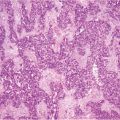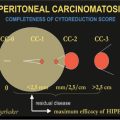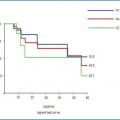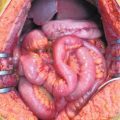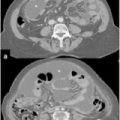Year 2012
Description
Age
0–44
45–54
55–64
65–74
75+
Total
Malignant neoplasm of peritoneum or retroperitoneum (primary)
133
264
518
665
732
2,312
Malignant neoplasm of peritoneum or retroperitoneum (secondary)
2,862
6,028
10,364
13,605
11,753
44,612
Table 2.2
Mortality for peritoneal carcinomatosis (PC) in Italy (first cause)
ICD-10 | Years | |||||
|---|---|---|---|---|---|---|
2006 | 2007 | 2008 | 2009 | 2010 | 2011 | |
C48.0 | 270 | 222 | 286 | 261 | 257 | 230 |
C48.1 | 15 | 14 | 11 | 17 | 14 | 9 |
C48.2 | 159 | 155 | 198 | 182 | 124 | 125 |
C48.8 | 1 | |||||
C78.6 | 272 | 288 | 233 | 276 | 302 | 316 |
Total | 717 | 679 | 728 | 736 | 697 | 680 |
Table 2.3
Mortality for peritoneal carcinomatosis (PC) in Italy (multiple causes)
ICD-10 | Years | |||||
|---|---|---|---|---|---|---|
2006 | 2007 | 2008 | 2009 | 2010 | 2011 | |
C48.0 | 297 | 257 | 312 | 289 | 282 | 251 |
C48.1 | 17 | 17 | 15 | 19 | 19 | 11 |
C48.2 | 253 | 252 | 251 | 302 | 210 | 170 |
C48.8 | 1 | 1 | ||||
C78.6 | 8,219 | 8,648 | 8,557 | 9,060 | 9,505 | 9,626 |
Total | 8,787 | 9,174 | 9,235 | 9,670 | 10,016 | 10,059 |
2.2 Peritoneal Carcinomatosis from Colorectal Cancer
Globally, colorectal cancer (CRC) is the third most common cancer and ranks as the fourth most common cancer-related cause of mortality [1]: it is the third most common cancer in men [746,000 (10 %) cases] and the second most common in women [614,000 (9.2%) cases]. Almost 55 % of cases occur in more developed regions. There is wide geographical variation in incidence across the world, and geographical patterns are very similar in men and women: incidence rates vary tenfold in both sexes worldwide, the highest estimated rates being in Australia/New Zealand and the lowest in western Africa (4.5 and 3.8 per 100,000, respectively). Mortality rate is lower [694,000 (8.5 %) deaths] but with more deaths (52 %) in the less developed regions of the world, reflecting a poorer survival in these regions. There is less variability in mortality rates worldwide (sixfold in men, fourfold in women), with the highest estimated mortality rates in both sexes in central and eastern Europe (20.3 per 100,000 for men; 11.7 per 100,000 for women) and the lowest in western Africa (3.5 and 3.0, respectively) [1].
In United States, the incidence of CRC is about 149.000 new cases per year, with a related mortality rate reaching 30 % [3]. A major component of treatment failure is cancer dissemination within the peritoneal cavity appearing as local recurrence of primary tumor or peritoneal metastases, which is estimated to account for 40 % of all patients with CRC [4].
Thomassen et al. [5] studied the incidence of synchronous PC in patients affected by CRC; data were extracted from the Eindhoven Cancer Registry over a period of 15 years; results are reported in Fig. 2.1. In Italy, CRC has an incidence of 38,000–41,000 new cases per year, with a 33 % mortality rate (13,000 deaths per year). Among these patients, about 15 % (6,000 per year) present with primary PC, whereas 35 % of all mortality (4,600 per year) is related to peritoneal recurrence alone, or 11 % of all patients with CRC [2]. Table 2.4 summarizes the more significant experiences in the literature regarding PC incidence and local recurrence from CRC in different series of patients [6–17].
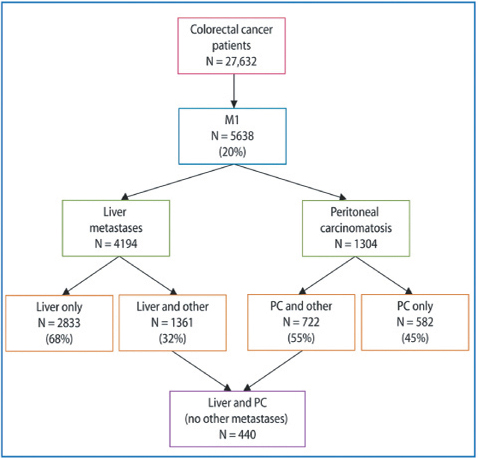

Fig. 2.1
Incidence of synchronous peritoneal carcinomatosis (PC) in patients with colorectal cancer (CRC) in a large, population-based study from Eindhoven Cancer Registry [5]
Table 2.4
Incidence of local recurrence and peritoneal carcinomatosis (PC) from colorectal cancers reported in the literature
Study [Reference] | No. patients | Local recurrence (%) | PC (%) |
|---|---|---|---|
Clinical series | |||
Malcolm et al. [9] | 285 | 3.9 | 13 |
Cass et al. [6] | 280 | 23 | 28 |
Russell et al. [13] | 94 | 7 | 12 |
Mendenhall et al. [10] | 140 | 29 | 3 |
Olson et al. [12] | 281 | 9 | – |
Minsky et al. [11] | 294 | 9 | 4 |
Gilbert et al. [8] | 31 | 36 | 3 |
Jayne et al. [17] | 2,756 | −4.9 | |
Reoperation series | |||
Gunderson et al. [14] | 91 | 48 | 21 |
Tong et al. [15] | 64 | 48 | 44 |
Autopsy series | |||
Russell et al. [16] | 53 | 38 | 36 |
Gilbert [8] | 45 | – | 40 |
2.3 Peritoneal Carcinomatosis from Gastric Cancer
Although the incidence of gastric cancer (GC) has decreased in recent years, it is still the fourth most common newly diagnosed cancer worldwide and the second leading cause of cancer-related death [5]. There are major differences in the incidence of GC across countries and continents. Global incidence, as well as primary tumor location and histological type, are constantly changing. In the US and most of western Europe, there has been a marked decline in distal intestinal GC, whereas the incidence of proximal and Barrett’s adenocarcinoma of the gastric cardia and esophageal-gastric junction has been increasing. The incidence of diffuse adenocarcinoma, on the other hand, is largely unchanged. Adenocarcinoma of the body of the stomach and antrum predominates in developing countries, among African Americans, and in lower socioeconomic groups, whereas proximal tumors are more common in developed countries, among Caucasians, and in higher socioeconomic classes [18]. Nevertheless, GC is common throughout Europe. In 2000, there were 192,000 new diagnoses, with 158,000 deaths [19].
In Italy, the incidence accounts for 17,000 new patients per year, with higher mortality rates [10,900 (60 %) per year] [1, 2]. Outcome remains poor despite advances in therapy, and an overall 5-year survival rate of about 20% compares very unfavorably with that of 70% achieved in Japan [19]. Peritoneal dissemination is the most frequent pattern of metastasis from GC and commonly occurs via intracoelomic dissemination or tumor spillage during surgery [20]. PC is present at diagnosis in 5–20 % of patients and can affect 60 % after curative treatment [21, 22]. Despite radical surgery and extended lymphadenectomy, 20–50 % of patients will develop peritoneal recurrence during their follow- up. Serosal involvement, Lauren diffuse histotype, and positive peritoneal cytology are the most important risk factors for peritoneal recurrence after radical surgery [23]. Multicenter studies indicate a decrease in locoregional recurrence and an increase in peritoneal recurrence of GC in recent years, with approximately one third having total recurrences after curative surgery [24]. Although there are few data available from cancer registries, PC form GC in Italy is likely to reach 3,500–4,000 cases per year, with a very high mortality rate [3,100 (30 %) of all deaths per year].
Stay updated, free articles. Join our Telegram channel

Full access? Get Clinical Tree



